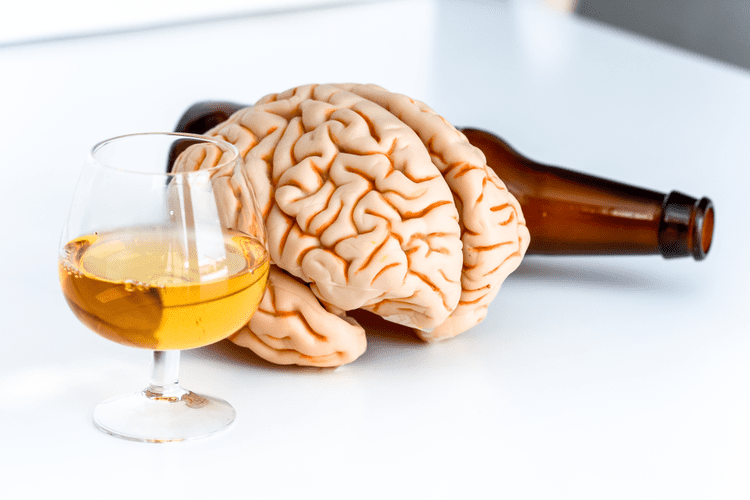Dealing effectively with interpersonal problems in the family, and improving communication and avoiding conflicts have https://icelanddekk.is/how-alcohol-is-linked-to-headaches-and-migraines/ been effectively employed in the Indian context16,17. Additionally, this model acknowledges the contributions of social cognitive constructs to the maintenance of substance use or addictive behaviour and relapse1. Given data demonstrating a clear link between abstinence goals and treatment engagement in a primarily abstinence-based SUD treatment system, it is reasonable to hypothesize that offering nonabstinence treatment would increase overall engagement by appealing to those with nonabstinence goals. Indeed, there is anecdotal evidence that this may be the case; for example, a qualitative study of nonabstinence drug treatment in Denmark described a client saying that he would not have presented to abstinence-only treatment due to his goal of moderate use (Järvinen, 2017). Additionally, in the United Kingdom, where there is greater access to nonabstinence treatment (Rosenberg & Melville, 2005; Rosenberg & Phillips, 2003), the proportion of individuals with opioid use disorder engaged in treatment is more than twice that of the U.S. (60% vs. 28%; Burkinshaw et al., 2017).
- Although specific intervention strategies can address the immediate determinants of relapse, it is also important to modify individual lifestyle factors and covert antecedents that can increase exposure or reduce resistance to high-risk situations.
- Creating, implementing, and adhering to a relapse prevention plan helps to protect your sobriety and prevent the AVE response.
- Seeking help in time can prevent you from slipping into uncontrolled active addiction.
- The strengths of the study lie in its use of near-real-time EMA reports of AVE responses, recorded soon after each lapse, and the ability to use a stream of EMA reports over many lapses to characterize the prospective influence of AVE responses on progression to subsequent lapses.
- In the 1970s, the pioneering work of a small number of alcohol researchers began to challenge the existing abstinence-based paradigm in AUD treatment research.
‘This Time Will Be Different’

Instead of learning and growing from their mistake, an individual may believe that they are unable to complete a successful recovery and feel shame and guilt. According to Beck et al., (2005), “A cognitive therapist could do hundreds of interventions with any patient at any given time”1). A careful functional analysis and identification of dysfunctional beliefs are important first steps in CBT. The hallmark of CBT is collaborative empiricism and describes the nature of therapeutic relationship. Cue exposure is another behavioural technique based on the classical conditioning Sober living house theory and theories of cue reactivity and extinction12,13.
Eliminating Myths and Placebo Effects
For example, offering nonabstinence treatment may provide a clearer path forward for those who are ambivalent about or unable to achieve abstinence, while such individuals would be more likely to drop out of abstinence-focused treatment. To date there has been limited research on retention rates in nonabstinence treatment. This suggests that individuals with non-abstinence goals are retained as well as, if not better than, those working toward abstinence, though additional research is needed to confirm these results and examine the effect of goal-matching on retention. The results of the Sobell’s studies challenged the prevailing understanding of abstinence as the only acceptable outcome for SUD treatment and raised a number of conceptual and methodological issues (e.g., the Sobell’s liberal definition of controlled drinking; see McCrady, 1985). A “controlled drinking controversy” followed, in which the Sobells as well as those who supported them were publicly criticized due to their claims about controlled drinking, and the validity of their research called into question (Blume, 2012; Pendery, Maltzman, & West, 1982). Despite the intense controversy, the Sobell’s high-profile research paved the way for additional studies of nonabstinence treatment for AUD in the 1980s and later (Blume, 2012; Sobell & Sobell, 1995).
5. Feasibility of nonabstinence goals
A single lapse doesn’t necessitate a downward spiral, and even a significant period of relapse doesn’t mean lifelong struggle. Having effective coping strategies in place is crucial because the likelihood of never experiencing a setback in recovery is quite low. Experiencing a setback in mental health recovery can feel disappointing, frightening, or devastating. These feelings may be compounded by reactions from concerned family and friends, who might view a setback as evidence of failure or lost progress.

- In addition, specific cognitive-behavioral skills training approaches, such as relaxation training, stress-management, and time management, can be used to help clients achieve greater lifestyle balance.
- The assumption of RP is that it is problematic to expect that the effects of a treatment that is designed to moderate or eliminate an undesirable behaviour will endure beyond the termination of that treatment.
- Similarly, self-regulation ability, outcome expectancies, and the abstinence violation effect could all be experimentally manipulated, which could eventually lead to further refinements of RP strategies.
- Moreover, an emphasis on post-treatment maintenance renders RP a useful adjunct to various treatment modalities (e.g., cognitive-behavioral, twelve step programs, pharmacotherapy), irrespective of the strategies used to enact initial behavior change.
- Counselors can work with clients to identify the outcome expectancies (both positive and negative) for substance use.
His therapist identified strategies to enhance his motivation, to abstinence violation effect help him engage in therapy, deal with craving, reducing social anxiety, assertiveness and beliefs and positive expectancies about alcohol use, and confidence or sense of self-efficacy in remaining abstinent. The wife was involved in therapy, to support his abstinence and help him engage in alternate activities. Rajiv’s problem is an illustration of how various psychological, environmental and situational factors are involved in the acquisition and maintenance of substance use. Parametric survival analyses that allowed for recurrent events within-subjects treated each lapse episode as the beginning of an interval during which the participant was at risk for having another lapse, and examined how AVE responses to each lapse affected the likelihood of progression.
Relapse, Relapse Prevention

Even when it remains below the level of full-blown relapse, smoking that is part of a routine pattern of daily use may not produce an AVE, because there is no abstinence to violate. To avoid data from periods when smoking had become routine, we limited the analysis to lapses that occurred before the onset of routine daily smoking. Daily resumption was defined as 3 or more consecutive days of smoking at any level, the last day of which marked the end of the initial abstinence attempt and the resumption of daily smoking.
